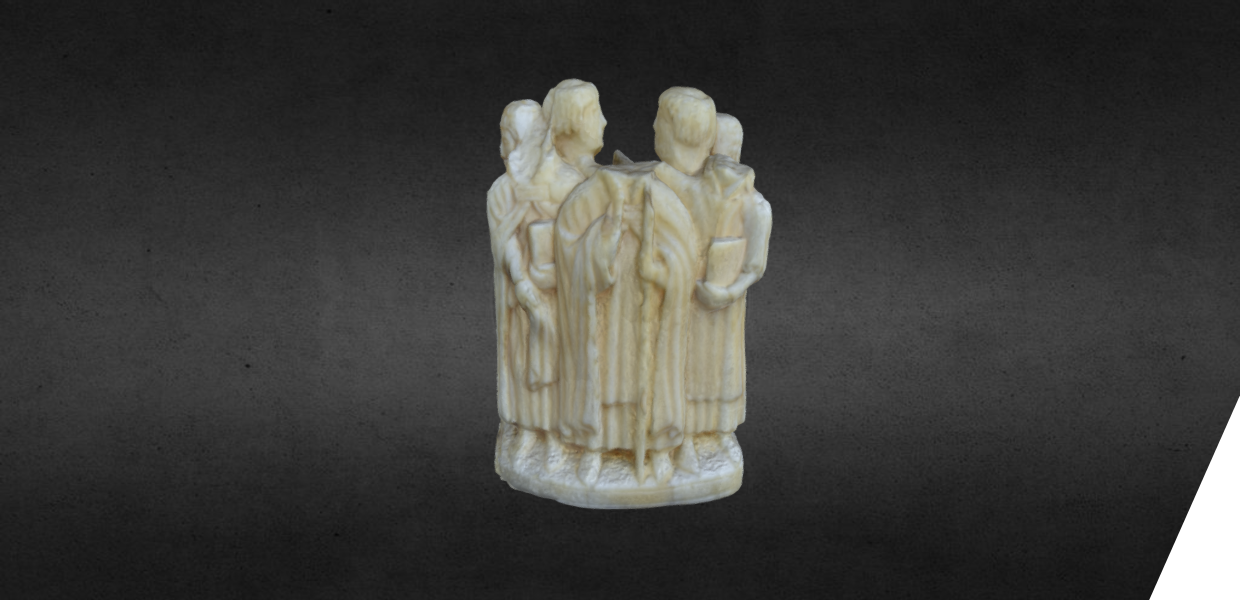The Hunt Museum is in Limerick in the west of Ireland. The museum preserves and exhibits the original artefacts from ‘the Hunt Collection’, an eclectic collection of approximately 2,000 works of art and antiquities gathered by antique dealers and collectors John and Gertrude Hunt over their lifetime. Described as a ‘cabinet for the curious’, the Hunt Museum is dedicated to enriching lives with culture, creativity, and learning.
The role of digitisation at the Hunt Museum
The Hunt Museum believes that the modern museum operates across three platforms, including the human - the community; the physical – the building itself and the collections; and the virtual – the web environment and digital content.
Projects like Europeana Archaeology and Art of Reading in the Middle Ages (ARMA) have allowed the museum to increase its digital capacity and improve its ability to share its cultural heritage with a wider audience. Projects also allow the museum to learn from other institutions and project partners, their collections and especially from their expertise.
During the lifetime of the Europeana Archaeology project, the Hunt Museum contributed 150 objects in 2D format and 50 objects in 3D format, and enriched the information on those objects which were then published on Europeana. A further 50 3D objects and 156 2D objects have been published on Europeana as part of the recently completed ARMA project and you can see all the Museum’s collection in Europeana. The Museum used the Share3D dashboard with support from CARARE to share metadata for its 3D objects with Europeana.
3D digitisation
3D digitisation at the Hunt Museum began after the museum was awarded funding through the Heritage Council of Ireland to deliver training to its staff and volunteers in photogrammetry and 3D post-processing. This project was called Limerick3D and its main goal was to reach as many people as possible by digitising the Hunt Museum’s collection and making the content publicly open data. The project evolved into a permanent 3D strategy in the museum, which continues to digitise the collection in 3D and to involve volunteers as much as possible. 3D models are integral to educational activities and the museum shares 3D models via Sketchfab and also as 3D printable models via Scan the World.
Using digitisation for engagement
The Hunt Museum uses both its digitisation project and its digitised collections for engagement. It engages with the local community in Limerick and the Mid-west by running short 3D digitisation days for groups of interested volunteers. These are a form of outreach and encourage engagement with the museum, and they have also resulted in a large number of objects being digitised in 3D and published on Sketchfab.
Connecting to platforms is the first step, and communicating it is the next. Social media is vital to the Museum’s successful engagement and communication activities. A lot of its high-quality digitised objects are used across our social media platforms to create conversations by placing material online with information on our objects.
Using digitisation for education
Successful education programmes have found that 3D digitisation lends itself especially well to teaching children about museum objects.
As part of the ARMA project, the museum has created a suite of learning resources for primary and secondary school pupils that use the digitised medieval collections. All resources encourage students to use and explore Europeana digitised collections. The resources make excellent use of video-based learning tools, online games, and the standard format for learning scenarios used by Europeana Classroom.
The Hunt is using its digitised collection in the Three Muses Joint Education Programme, an education programme that spans three cultural institutions in Limerick city. Objects have been digitised and are currently being used in the development of a digital teachers pack as well as in an online game aimed at school children ages 8-10 years old.
IIIF
Through recent publications for ARMA and Fragmentarium, the museum has seen the potential for IIIF (International Image Interoperability Framework), a protocol for sharing and using digitised images of cultural heritage objects in high quality. By standardising the way the image and metadata are delivered means that comparing images from different institutions can be easily achieved especially using standardised IIIF viewers and annotating tools. The information is contained in IIIF manifests that are stored by the creating or hosting institution. The Hunt Museum have recently been able to create IIIF manifests for our 3D models so and created annotated digitial displays using our 3D models and Exhibit.so.
Find out more
The case study has shown 3D and digitisation in general have been an excellent opportunity for the Hunt Museum. It has not only allowed the Museum to engage with volunteers who learned transferable skills in digitisation but also to make its collection more accessible and searchable by placing it into the public domain for resharing and reuse. 3D digitisation has also allowed the Museum to unlock educational potential by using its 3D data sets across various platforms and in tourism and education programmes and, in this way, to access new audiences.
You can read the full case study on the CARARE website.
If you are a cultural heritage institution interested in finding out more about digitising objects in 3D, you can find some useful resources in CARARE’s training hub.



